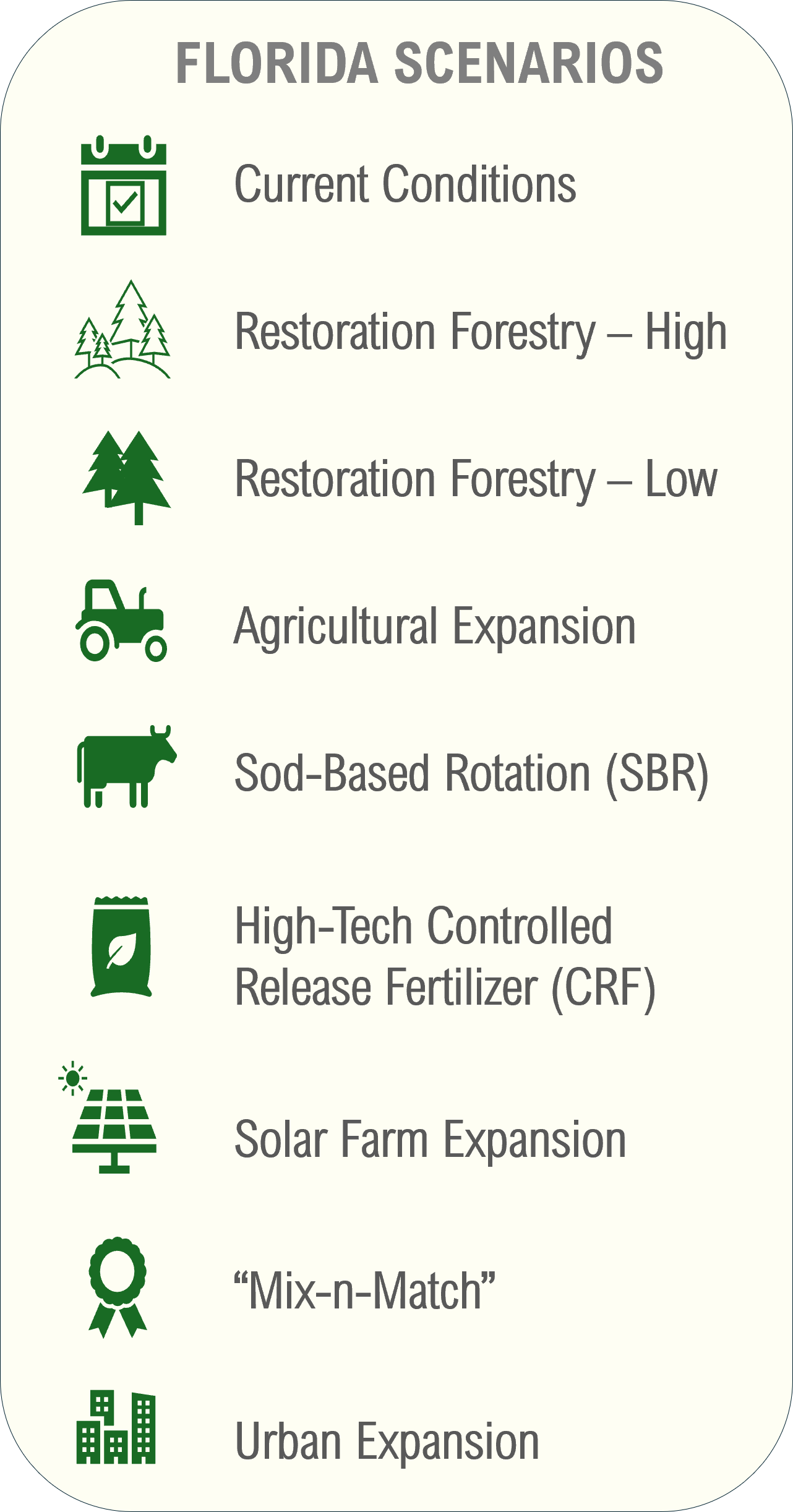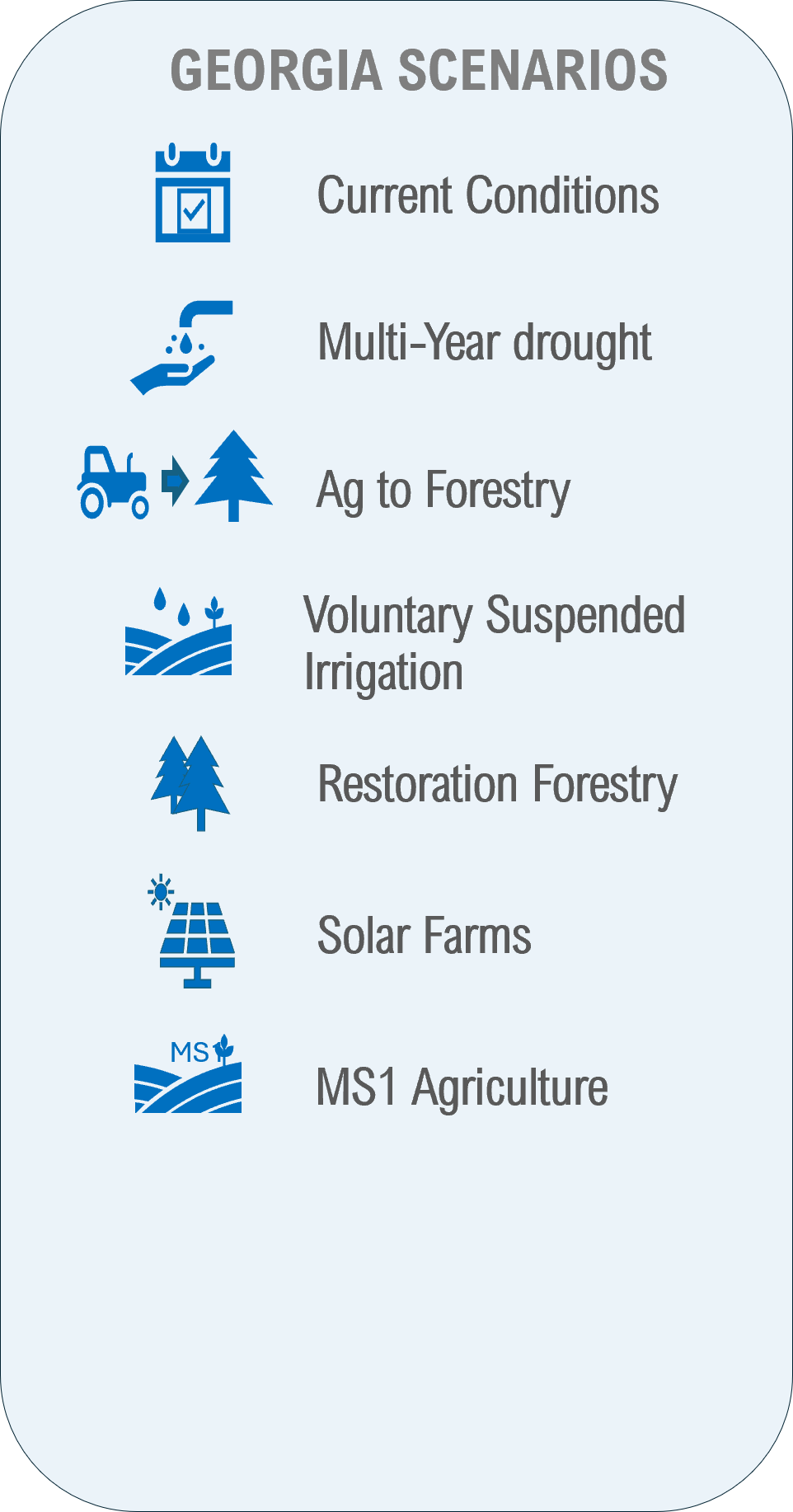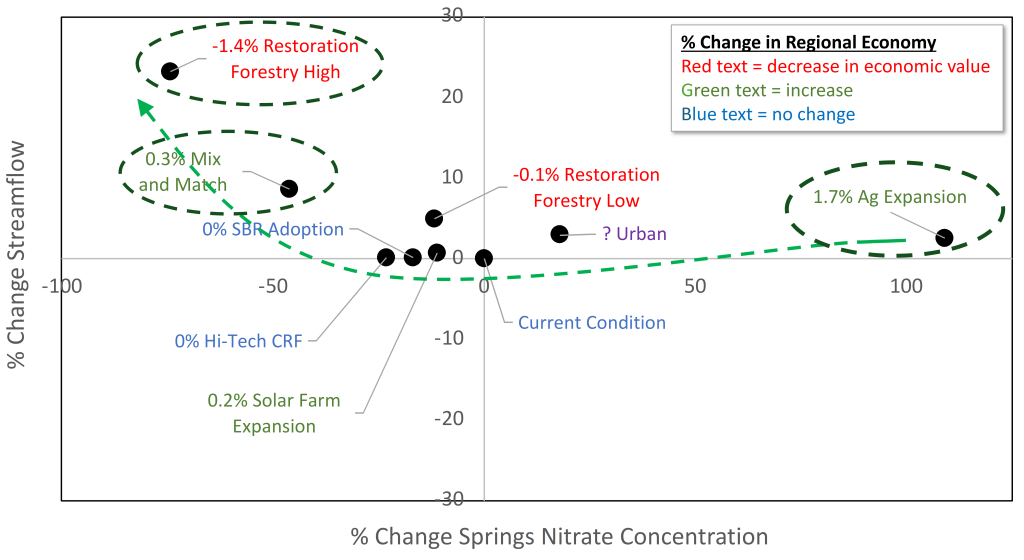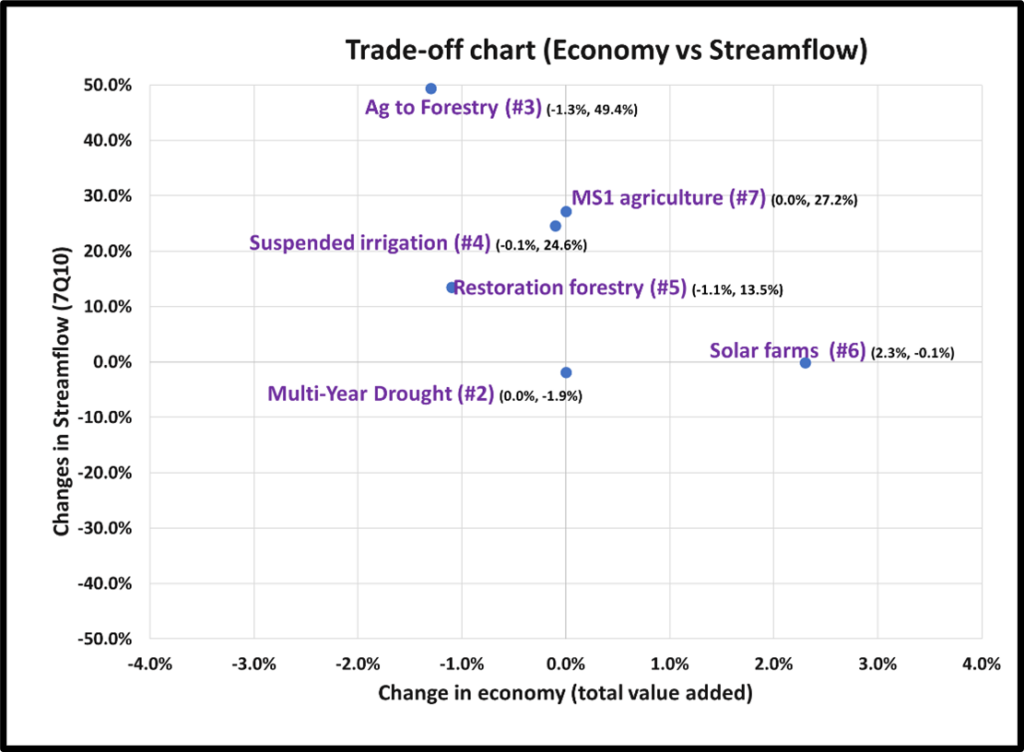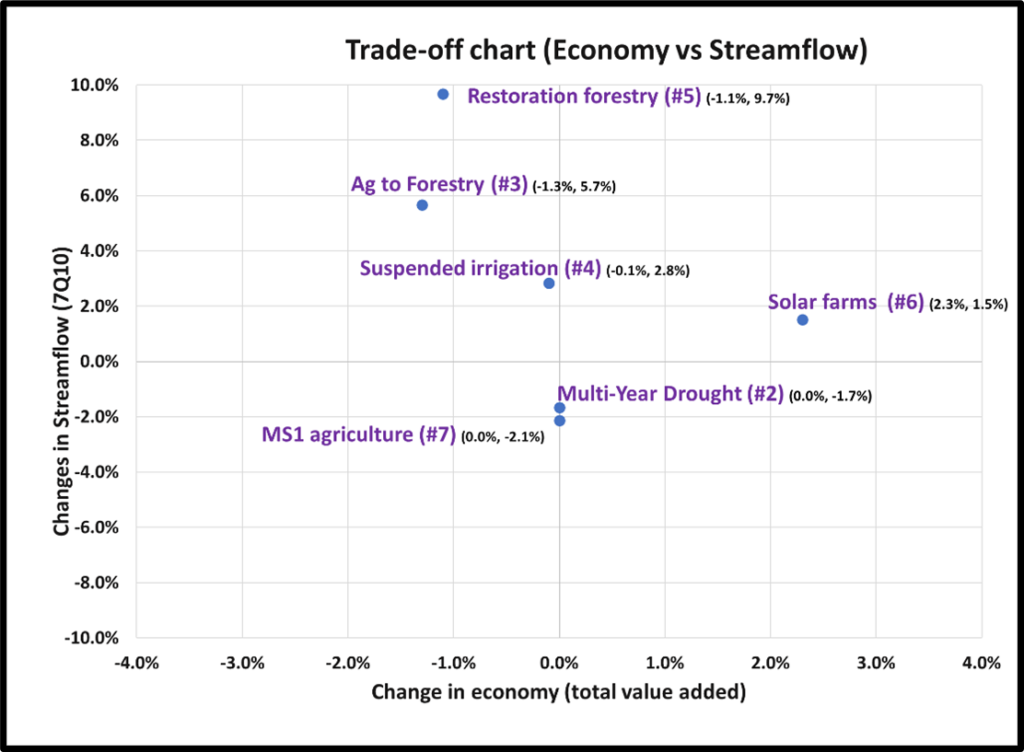While farm/forest scale models provide valuable information about economic-environmental tradeoffs at the scale of an individual producer, watershed-scale (regional) modeling is needed to quantify impacts on receiving waters (i.e., the river and aquifer) and the regional economy. In the PMP, the project team and stakeholders collaboratively defined a suite of scenarios to assess the tradeoffs and synergies of different climate, land use, cropping system, and BMP adoption alternatives . Nine regional scenarios were developed for Florida and seven for Georgia. A summary of the scenarios is included in the images below. Click on the images to view a full description of each scenario.
The scenarios should not be interpreted as specific recommendations for management or predictions for the future. They were designed by the PMP stakeholders and modelers collaboratively to explore the response of the system to various types of interventions. In some cases, the scenarios are designed to reflect “extreme” conditions that would never be realistically implemented, but nevertheless help to understand the limits or “bookends” of a system’s response to various conditions. Other scenarios were designed to be more realistic in terms of possible future land use change, management intervention, or climate variation.
Click on the figures to download full descriptions of the scenarios
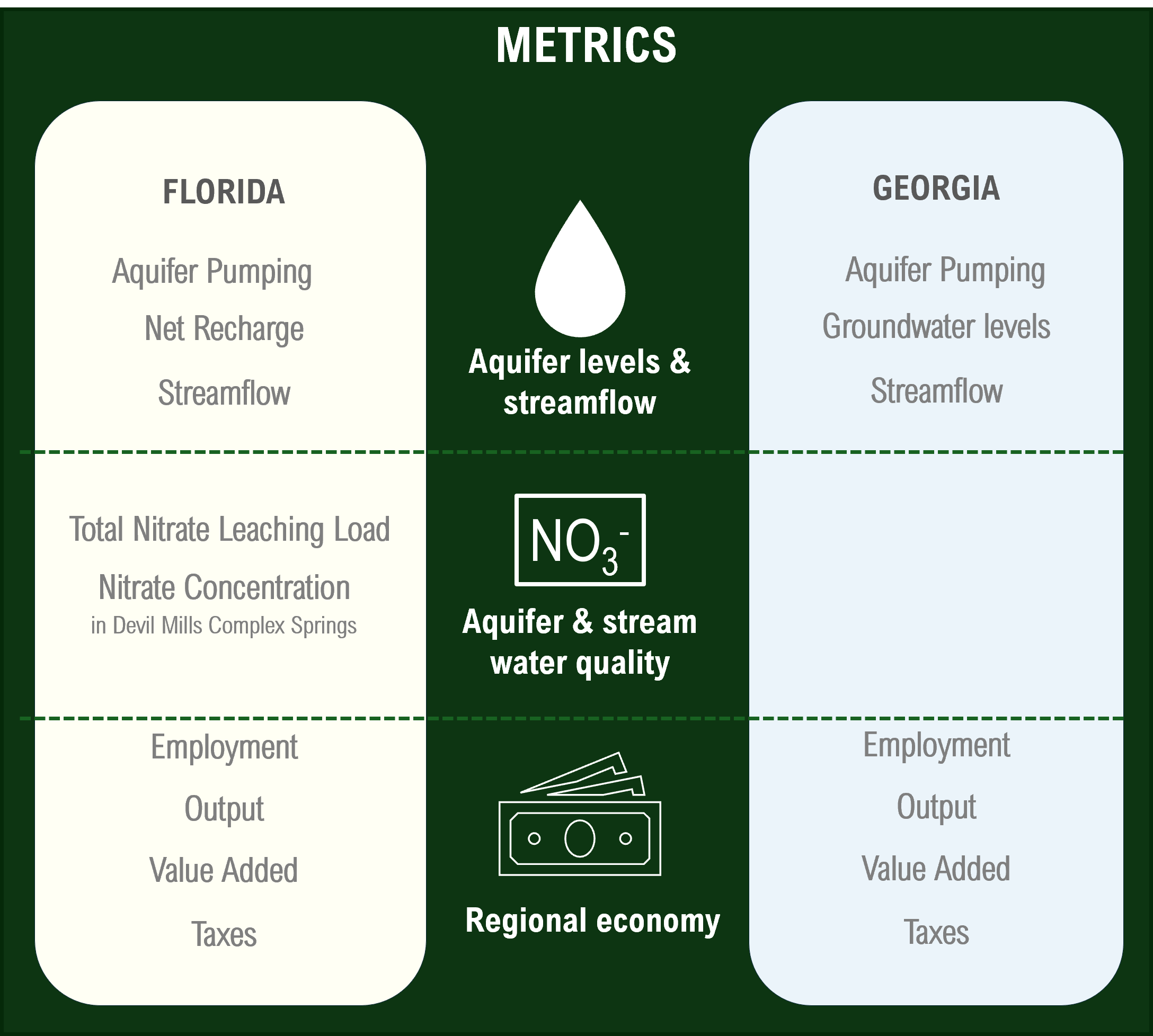
A coupled SWAT-MODFLOW model was used to simulate impacts of these on groundwater, spring water, and river water quality and quantity at the watershed scale in the Santa Fe River Basin (SFRB) in Florida and on groundwater and streamflow in the Lower Flint River Basin (LFRB) in Georgia. Both are ecologically sensitive, predominantly agricultural/silvicultural watersheds with land uses representative of the study region, and both are subject to stringent environmental regulations that are not currently being met. Thus, these watersheds serve as valuable test-beds for addressing the challenge of meeting diverse, and sometimes conflicting, water needs while maintaining environmental quality.
Economic impacts analyses were conducted using IMPLAN software to estimate the changes in the economic contributions of agriculture, forestry, and supporting industries in the study region for the alternative scenarios.


